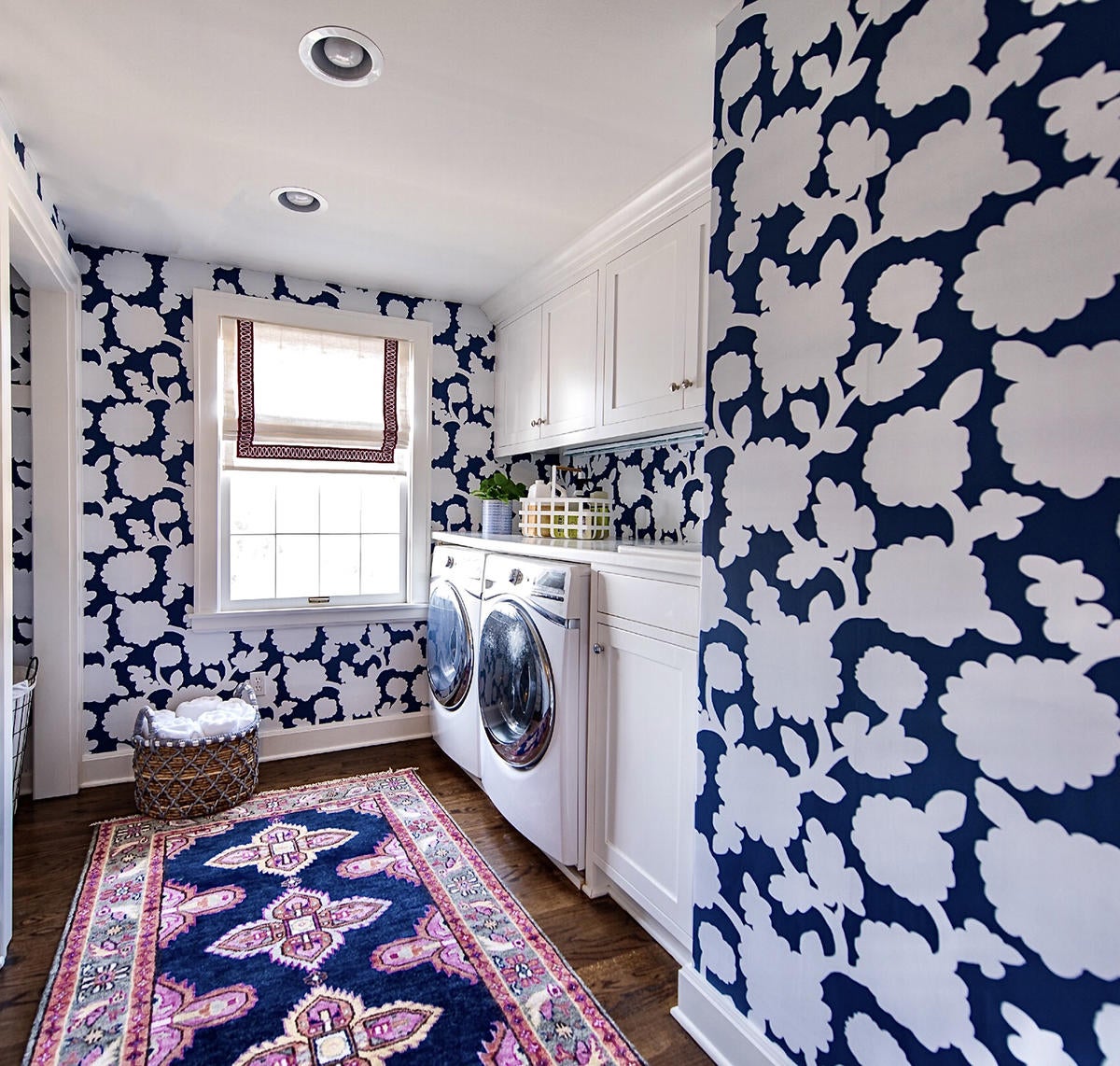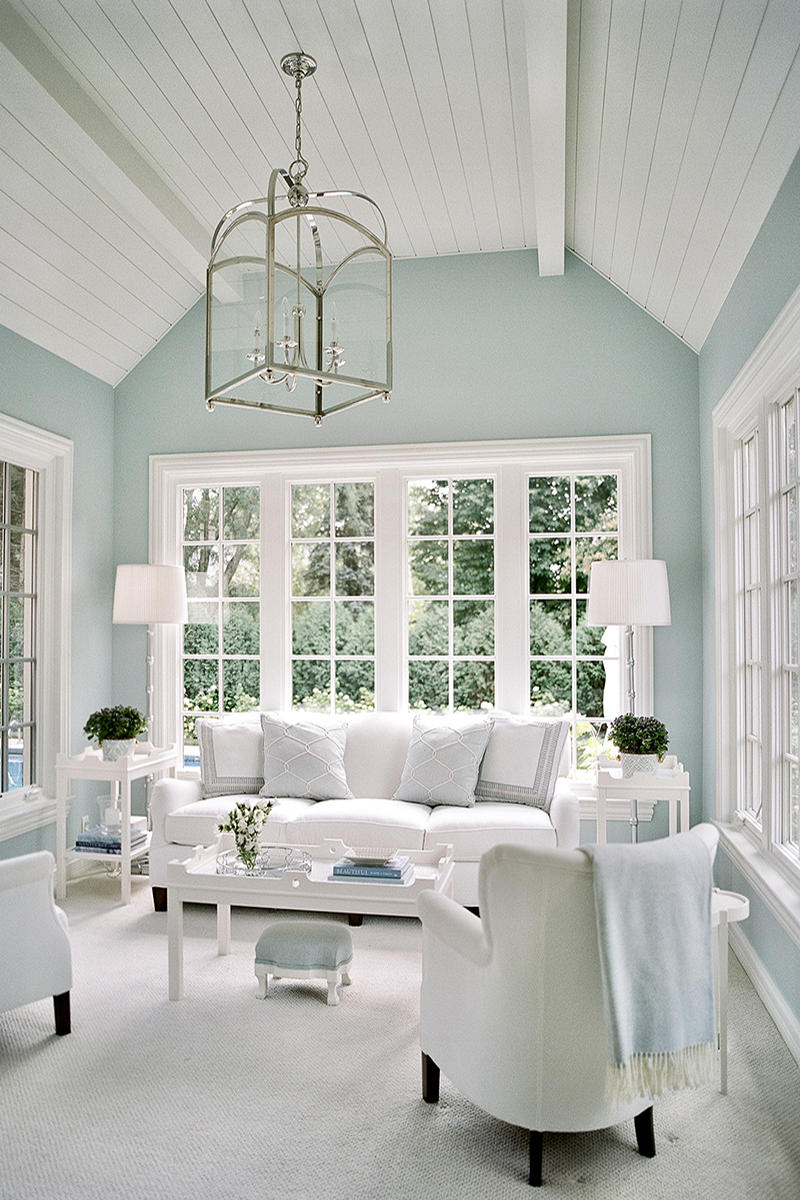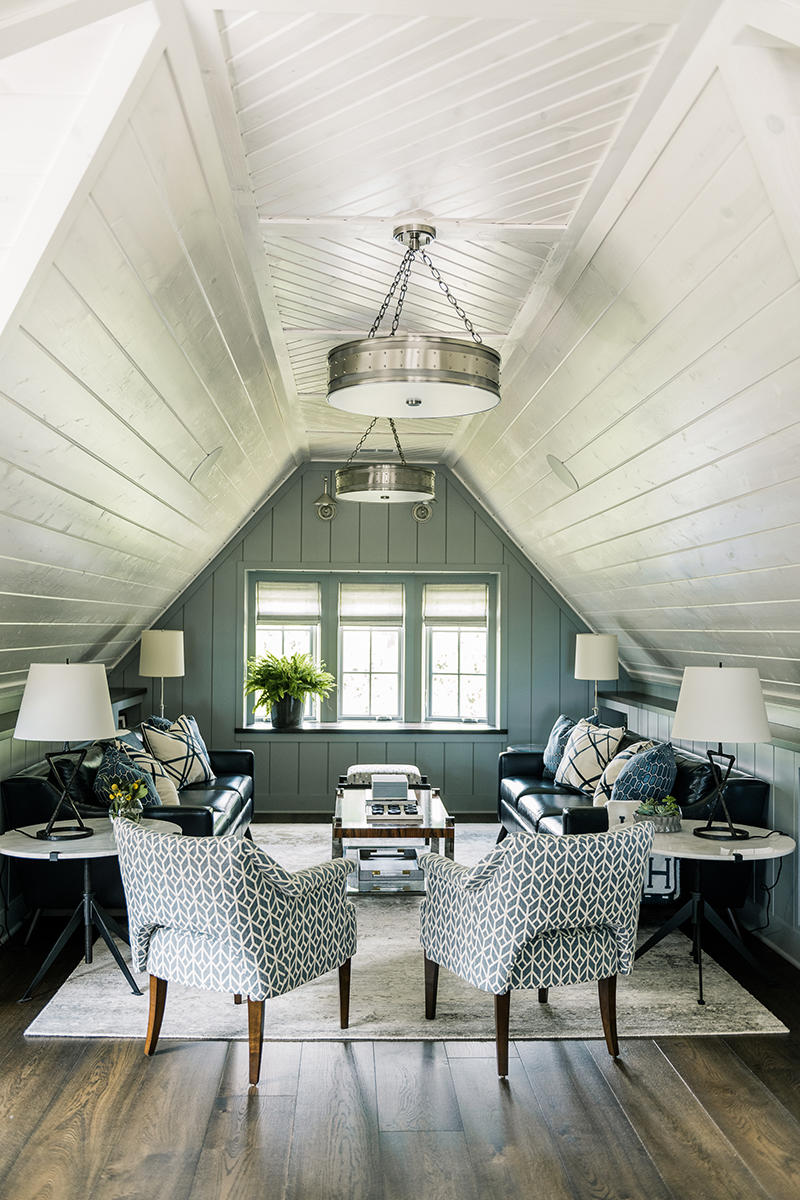The 50 States Project is a yearlong series of candid conversations with interior designers across the country about how they’ve built their businesses. This week, Milwaukee, Wisconsin–based designer Meghan Posnanski of Summit Drive Design tells us why she invested in professional photos from day one, how she's overcome the challenges of her local market, and the early-career charging lesson she learned the hard way.
How did you become a designer? What were some of your earliest memories of being drawn to design?
I'm self-taught. I have a background in elementary education and Spanish, and I was a teacher for 10 years in the Milwaukee Public School District. Then my husband and I had our first child, and we moved into a really old house on the east side of Milwaukee. My mom and dad were really pushing us to buy this house because it had great bones, but it needed a gut job. We bought it, started fixing it up and I fell in love. The kitchen was the biggest challenge—it hadn’t been renovated since the 1940s, so it still had metal cabinets and laminate flooring. It was just a disaster! The whole project took us two years to complete. Then I had my second child, and by that time we knew we didn't want to live in Milwaukee anymore—we wanted to move to a suburb for the school district. Plus, at the time, my job just wasn't paying off anymore. On a teacher's salary, all of my money was just going back into daycare. So I quit and became a stay-at-home mom.
That’s when some of my girlfriends asked if I would help them on the side with their houses. I said yes, and I was just doing it for fun and not charging. At that point, I really was clueless. I didn't know about the trade or about designer fabrics. I just knew that I loved color, and that I liked to mix antiques with new furniture. Once my daughter was in school full-time, I decided I was going to make a business out of it. I got my LLC and named my company, and it kind of blossomed from Instagram.
When did you launch?
Five years ago. When I started the business, the intention was that my sister would be with me and we would do it together, but then she had a fourth child, so it was just me for a while. Eventually, she came along and started doing commercial projects for Summit Drive. She still does the commercial aspect and I do the residential.
You said you were initially clueless about the business model for a design firm. How did you learn, and where did you look to understand the landscape?
I started picking things up from magazines. In House Beautiful and Traditional Home, everything said “to the trade” or “through a designer,” and I was like, “What does this even mean?” I had grown up with my mom using a designer, but I never picked up on [those details]. When I opened my first trade account, at Serena & Lily, I remember being really nervous. Then I just started catching on—I realized I can go to The Mart in Chicago, and that even here in the Milwaukee area, there are all these hidden to-the-trade gems around the city. After finding those showrooms, the business side just clicked. Then I just had to find my market in a city like Milwaukee.
What do you mean by that?
Well, [I had to] find the client who is willing to spend money on custom furniture and COM. Everyone watches HGTV and thinks, “I can easily get this for this price.” Getting people to spend money on a designer in the Milwaukee area has been a little more challenging, I think, than it might be in a bigger city like Chicago.

How did you set your rates at the beginning?
I was originally billing for my hours, and I would invoice my clients monthly. I felt like an attorney, just constantly billing, and keeping track of it all was much more difficult than I had assumed. So I started charging a fixed flat rate. It’s based on how much time I think I'll be spending on a project, and I charge that amount at a rate of $100 an hour. Half of the fee is due upon the signature with the contract, and the other half is due when the project ends. But that's been challenging because now, with the pandemic, my projects are taking quite a bit longer than anticipated, so I'm not getting that second half!
When you switched from hourly to the flat fee, were clients receptive?
I definitely feel more comfortable working with the flat rate, and I think they were very receptive as well, because they knew what they were getting. I had heard about this from another client who worked with a designer with hourly fees—the client was complaining because she was being charged for time even when they weren't getting anything accomplished. When we have a meeting that isn’t productive—maybe we didn’t find the right fabric, or didn’t pick a tile—I think my clients appreciate knowing that I'm not going to be billing them $400 for those four hours [that feel] lost. They’re covered by the flat fee.


What is your process once you sign a client?
Typically, I get a sense of the direction that they want to go in with their project first. I have them do homework—they make Pinterest boards that I’m able to reference as I’m sourcing furniture. I also have them get magazines like House Beautiful, Traditional Home and Midwest Living, and ask about their favorite Instagram follows. Then we go through what they like about the picture: The fabric choices? The whole design concept? The furniture layout? It usually centers around one piece of fabric or a rug, and then that's my starting point.
Are you presenting the whole scheme then, or are you helping them discover pieces along the way and building it together?
We usually build it together, but it depends on the client. If my client is a little more particular, I’ll say, “Here are 10 fabrics I think you'll like.” But for some clients, I bring a whole bin over.
Do you find most clients want to be part of that process and have that hands-on experience?
Yes, they love it. I feel like it's satisfying for them. They're making the decision as well, and they're in the process with me.
When in the process do they start to see what the whole room is going to look like?
If they don't have a good visual and they need one, my go-to is Instagram. I find designers that I love and follow, and then I can show them, “This is what I mean.” Then it just clicks. And then CAD layouts are really helpful with my clients as well to help them understand the furniture arrangements, or the scale of the furniture.
Do they pay extra for the drawings?
I bake the cost of that into my flat fee.
If you’re working with clients to pull the scheme together, when in the process are you placing orders? Is that something you’re doing along the way as you make decisions, or is there one big presentation first?
I have both types of clients. Some want to pay the full lump sum and get it all ordered at once; for others, we might start with two pieces of furniture and see where it takes us. Granted, that means the project takes much longer to complete. But when we start slowly and progress, the room is often a much better finished product in the end.

How many projects are you typically working on at one time?
I have about 10 right now, ranging from full construction to smaller projects with just draperies and a room refresh.
Do you see yourself always keeping that balance of small and large projects?
I think so. Now that I’ve had three full construction projects, I’ve realized that they take so much more time than I anticipated. Each time, I think I’ve finally planned it well and budgeted accordingly for my flat fee, but I never do. I think those are just lessons, and I'll eventually learn along the way.
How do you approach product pricing and markup, and how do you talk about it with clients?
The Milwaukee market is not used to spending a lot, so I have to gauge that when they tell me their budget. Besides the flat fee, I do tell them there will be a slight markup—it's not going to be MSRP pricing, but they won't be getting that “to the trade” discount. That was tricky for me, because my business grew by word of mouth from the work I did for my friends—and I was giving them that trade discount. I had to change my mentality to, This is my business, and I want to grow this business and make money. But explaining that to new clients was hard.


Tell me a little bit more about the Milwaukee design scene. What are people looking for when they come to you?
I feel like my clients are on the preppier side. I have a lot of only blue-and-white clients.
Is that your taste?
No. It's funny, because when they find and hire me, I know what they immediately like, but nothing in my house is blue and white besides a few ginger jars. There's just no other designer in the area who can navigate what they like. I do a lot of pattern play and a lot of color. My style is definitely not contemporary. I like mixing new and old.
My clients themselves are all across the board—they have kids from grade school to high school. I have a few young families building brand-new homes, and then the majority are remodels and additions in the suburbs. We’re working on houses that are anywhere from 4,000 to 8,000 square feet.
You have so clearly invested in photography from the beginning. Why was that important to you early on?
I knew I wasn't going to be taken seriously, especially because I didn't have a design degree.
Do you still feel that way now?
You know, no one's actually asked me if I have a design degree. I think it's just my insecurity about it, especially in the field with other designers.

What is one thing you know now that you wish you would have known five years ago when you were getting started?
I should’ve been charging differently for product from the beginning. If I had done that, I wouldn't have had to explain to clients why prices have crept up after I did that one room with them. I wish I’d had a strategic business plan, instead of just discovering as I went.
The way clients think about pricing is so interesting to me. How much are clients motivated by that idea of “getting a deal”—do you have to discourage them from thinking that way?
I think everyone loves a good deal, right? I love the hunt, and I love the find. I have a handful of clients who always expected that deal, and those are [typically] the clients whose parents had never worked with a designer before. Other clients totally get it; they know how the process works and they know that's how I make my living.
I had a contractor once who approached it really nicely. We were going back and forth about whose account we were going to put the tile on, and he said: “Meghan, do you mind if the clients buy the tile through me?” I didn’t have an issue with it—this was when I was first getting started, so I didn’t fully understand what he meant. Then he told me, point blank: “This is how I put food on the table for my family.” And I thought, “That's a good way of thinking about it.” I'm not doing this for fun. If my flat fee is only $2,000 or $2,500, I can't make a living that way.
Where do you see the most opportunity to grow?
I want to focus on full-room remodels and full-construction homes. If I’m picking up those clients, then I can hire another designer to take on the smaller projects—clients who just want wallpaper or a little powder room refresh.
What does success look like for you?
A happy client, and a product at the end that my client absolutely loves. And repeat clients, because they love it so much that they can’t wait to do it again.
To learn more about Meghan Posnanski, visit her website or find her on Instagram.





























